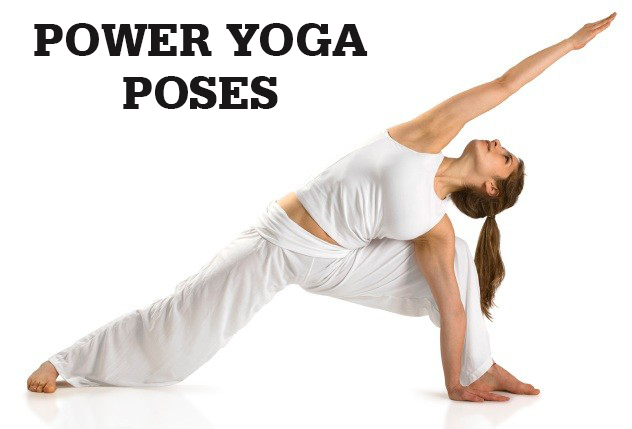
Ashtanga Vinyasa Yoga, or Ashtanga Yoga, or Power yoga, is a mentally, physically, and spiritually invigorating style of yoga. It mainly focuses around constant, dynamic movement over the practice of static poses most beginners are familiar with. If other forms of yoga have not been doing it for you, or if you are interested in expanding your knowledge of yoga’s various styles and principles, then this guide is for you. Here, you’ll learn the key power yoga poses for warming up, and a list of the power yoga poses required for its primary sequence.
To learn more, check out this introductory course on power yoga poses, or consider these beginners guide to Ashtanga Yoga for a head start.
Primary Yoga Principles
Power yoga is a combination of conventional yoga principles and modern ideas that embrace physical fitness. To understand where these two forms intersect, you must first understand the primary principles of yoga. Below are three of these principles relevant to your power yoga endeavors. For more, check out Energy, Balance, and Power, a guide to Vinyasa Yoga.
- Everyone is unique, as are their strengths and weaknesses. Over yoga’s nearly 5,000 year history, there have been various styles developed to address the capabilities of those who practice it, from meditation-based to physically transforming styles. Find the one that best fits you.
- Yoga is all about self-disciple and commitment, in your fitness practices and personal life. The two are intermixed and require an equal level of effort and discipline to succeed. The key to committing, improving, and succeeding in yoga is the focus. Focus brings the power of realization, and thus self-control.
- Yoga is a physical, mental, and spiritual practice that aims for liberation and self-improvement. These two things are attained by replacing toxic habits with healthy patterns. Grasp these patterns and their moral importance, and you will succeed.
Remember: while yoga is a great work out – which you can learn more about in this yoga for weight loss course – it is fundamentally about exercising the mind as well as the body. Find out how you can carry the benefits of physical yoga into your personal life with this yoga course on liberated living.
Now on to the poses!
Power Yoga Poses
Power yoga is called Ashtanga Vinyasa Yoga after Ashtanga, the Sanskrit word for “eight limbs,” referring to the eight aspects of spiritual yoga – Nama, Niyama, Asana, Pranayama, Pratyahara, Dharana, Dhyana, and Samadhi – and Vinyasa, a style of yoga based on a flow of movement and synchronized breathing. As such, Ashtanga Vinyasa, or power yoga, focuses on dynamic movements where a change of position occurs on each inhales and exhale.
The primary power yoga series, Yoga Chikitsa, begins with sun salutations called Surya Namaskara A and Surya Namaskara B.
Surya Namaskara A
- Begin standing straight up in the Samasthiti (Tadasana) position
- Raise your arms above your head in the Raised Hands Pose (Urdhva Hastasana)
- Bend down, and fold your arms forward over your legs in the Standing Forward Bend position (Uttanasana)
- Raise yourself into the Flat Back position with your fingertips on the ground.
- Lower yourself into the Four-Limbed Staff Pose (Chaturanga Dandasana), with your palms flat against the ground
- Lift your chest and hold yourself up with your arms in the Upward Facing Dog position (Udhva Mudka Svanasana)
- Raise your body into a pyramid in the Downward Facing Dog position (Adho Mukha Svanasana), and take five breaths
- Return to the Standard Forward Bend position in Step 2
- Raise your hands above your head
- Bring your arms back down to your side
Surya Namaskara B
- Begin standing straight up in the Samasthiti (Tadasana) position
- Bend your knees as though doing a squat, and raise your hands in the air for the Awkward Chair Pose (Utkatasana)
- Bend down, and fold your arms forward over your legs in the Standing Forward Bend position (Uttanasana)
- Raise yourself into the Flat Back position with your fingertips on the ground.
- Lower yourself into the Four-Limbed Staff Pose (Chaturanga Dandasana), with your palms flat against the ground
- Lift your chest and hold yourself up with your arms in the Upward Facing Dog position (Udhva Mudka Svanasana)
- Raise your body into a pyramid in the Downward Facing Dog position (Adho Mukha Svanasana), and take five breaths
- Put your right foot forward and put your arms in the air with your palms together, in the Warrior I position (Virabhadrasana I)
- Return to the Four-Limbed Staff Pose
- Return to the Upward Facing Down Pose
Yoga Chikitsa
This is the primary power yoga series that consists of about 40-75 poses, depending on the variation, after the sun salutations warm-ups.
2. Hastasana
3. Trikonasana
10. Ardha Baddha Padma Uttanasana
11. Utkatasana
12. Virabhadrasana I
14. Dandasana
16. Purvottasana
17. Baddha Padma Paschimottanasana
18. Mukaikapada Paschimottanasana
19. Sirsasana
20. Marichyasana
21. Navasana
22. Mukha Vrksasana
23. Bhujapidasana
24. Kurmasana
25. Kurmasana
26. Garbha Pindasana
27. Kukkutasana
28. Baddha Konasana
30. Supta Konasana
34. Setu Bandhasana
36. Ushtrasana
37. Parvatasana
39. Halasana
40. Karnapidasana
41. Urdvha Padmasana
42. Supta Vajrasana
43. Matsyasana
44. Uttana Padasana
45. Sirsasana
46. Balasana
47. Baddha Padmasana
48. Yogimudrasana
49. Padmasana
50. Tolasana
51. Savasana

Post Your Comments